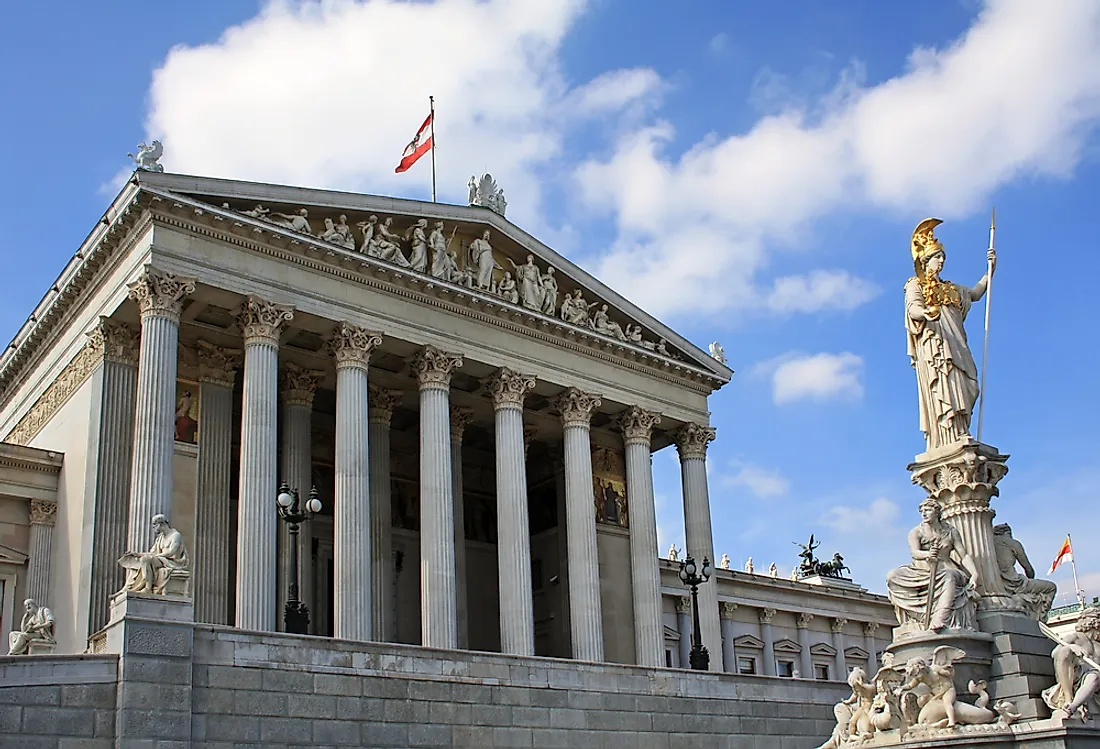What Type Of Government Does Austria Have?

The government of Austria is carried out under a representative democracy framework. Austria has a bicameral parliamentary system and is headed by two positions: the Federal President and the Federal Chancellor. The Constitution of Austria has established 3 branches of government in order to ensure a separation of powers: executive, legislative, and judicial. This article takes a closer look at each one.
Executive Branch
The executive branch of Austria is made up of the President, the Chancellor, and a cabinet of Ministers. The President is elected by the general population to serve for a 6-year term and to act as the Head of State. The person in this position has several powers according to the Constitution, including the ability to appoint the Chancellor, Supreme Court judges, Cabinet of Ministers, and military officers. In practice, however, the President acts as a figurehead for the nation and a symbol of national identity.
The Chancellor is the Head of Government and is appointed by the President. The person in this position leads the cabinet of Ministers and is considered to be the most powerful person in the government of Austria. The Chancellor is responsible for announcing Constitutional Court decisions, new laws, new treaties, declarations of war, and new rules of procedure. In addition, this position works with provincial level governments when a bill requires further approval and signs certifications of bills after the President.
The Council of Ministers is made up of the heads of each governmental agency. Each minister is responsible for the proper administration of his or her ministry. This Council carries out resolutions as enacted by the legislative branch or Constitutional Court.
Legislative Branch
The legislative branch consists of a bicameral Parliament, which is divided into the National Council and the Federal Assembly.
The National Council is made up of 183 individuals, who are elected by the general population and based on proportional representation. Each member serves for a 5-year term. This legislative body is responsible for passing bills - before these bills become law, they must be approved by the Federal Assembly. If the Federal Assembly vetoes the bills, the National Council may still pass them for Presidential approval with a majority vote.
The Federal Assembly is considered the upper house of Parliament, although the National Council has more power. The Federal Assembly is made up of 61 seats, which are elected by state legislatures to serve terms of 5 or 6 years.
Judicial Branch
The judicial branch in Austria functions independently from the legislative and executive branches. It is unique in that all of the courts here have federal authority. These courts hear cases concerning public law, criminal law, civil law, administrative law, and asylum law. When hearing administrative law cases, judges work under the Ministry of Justice. At the district level, Austria has 134 courts. At the regional level, there are 18 courts. Four courts serve as the appellate courts for the entire country and the Supreme Court is the final court of appeals. The Constitutional Court oversees issues concerning constitutional authority and civil matters. Court judges are appointed by the federal government to serve a life term.











